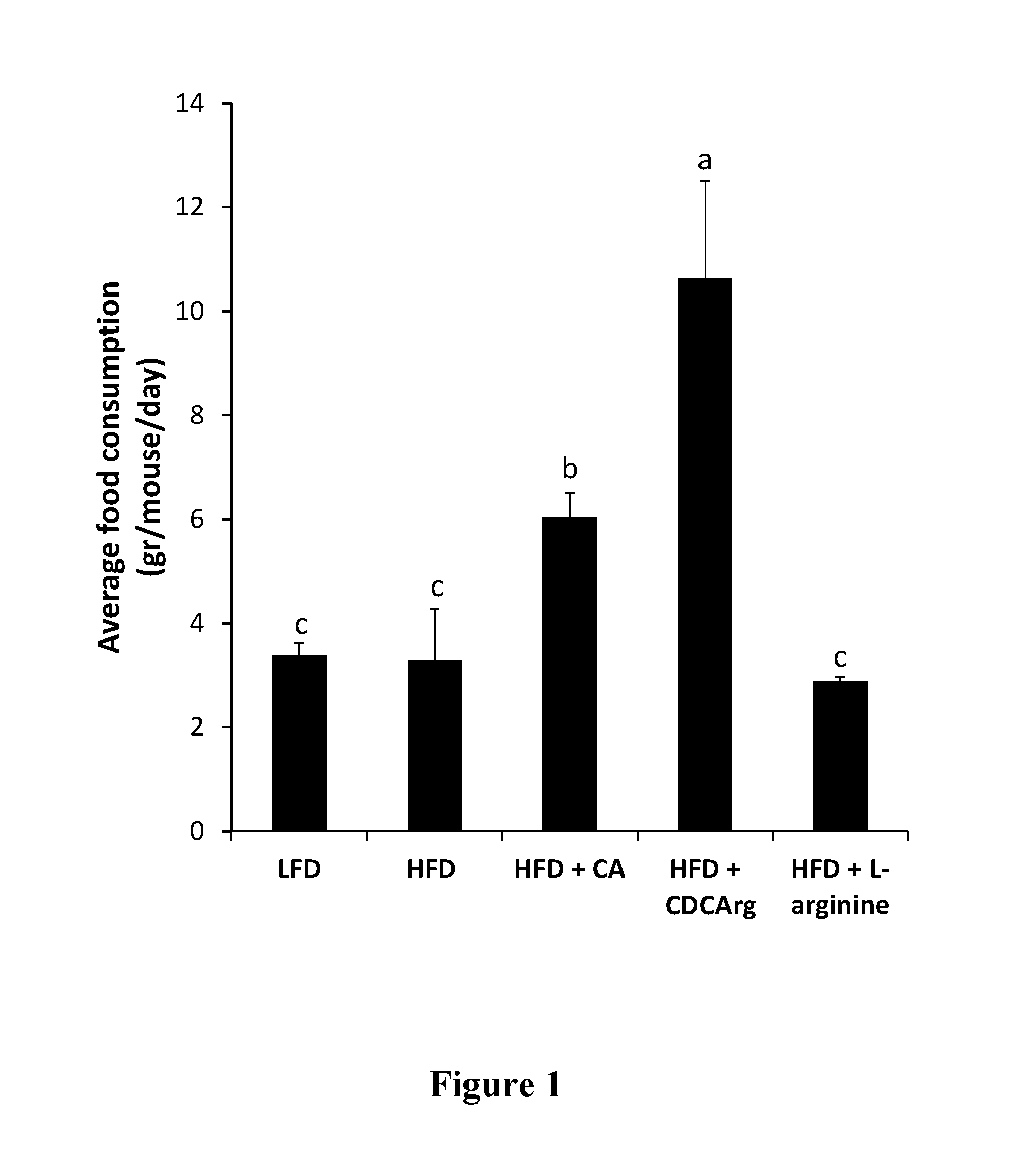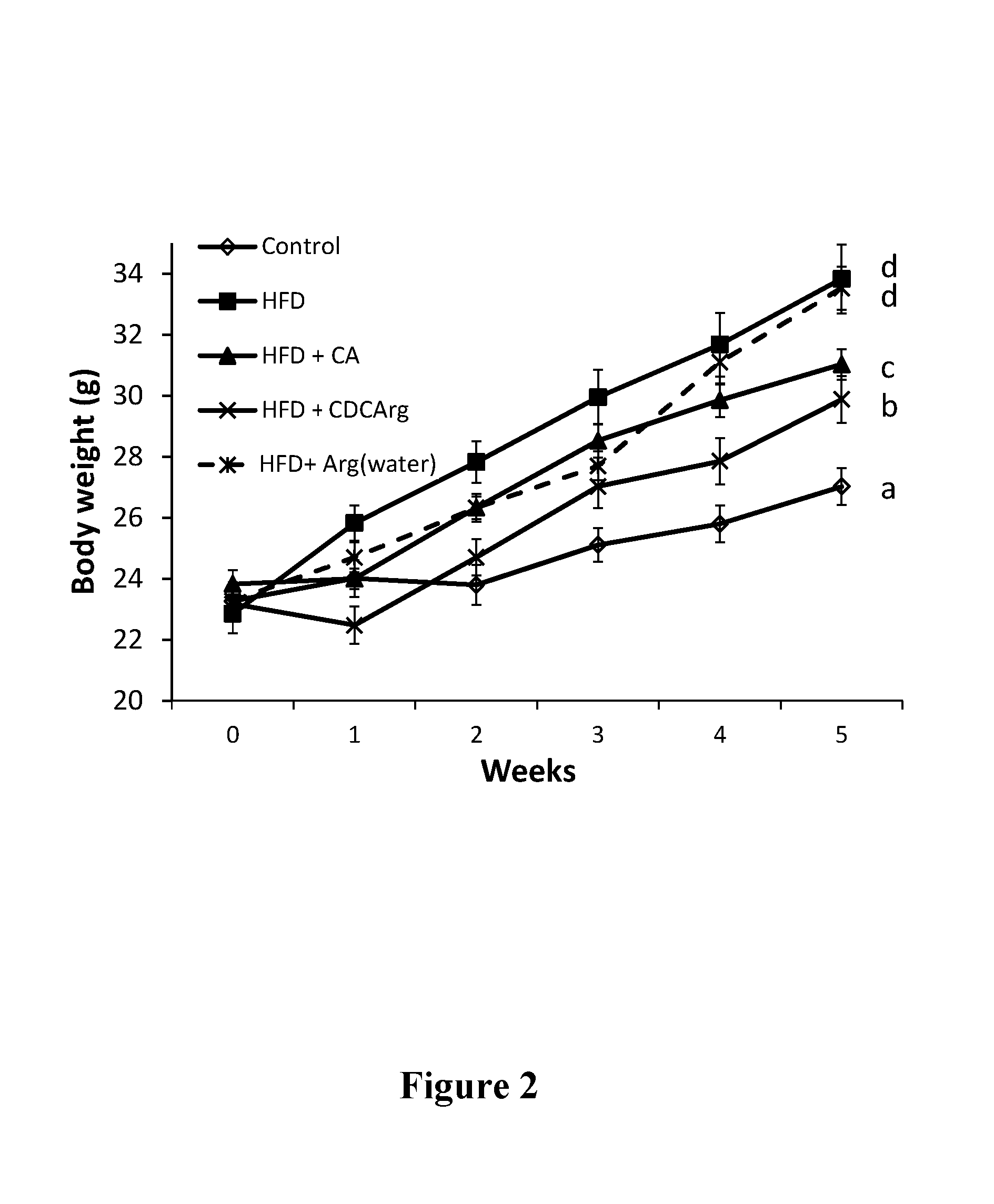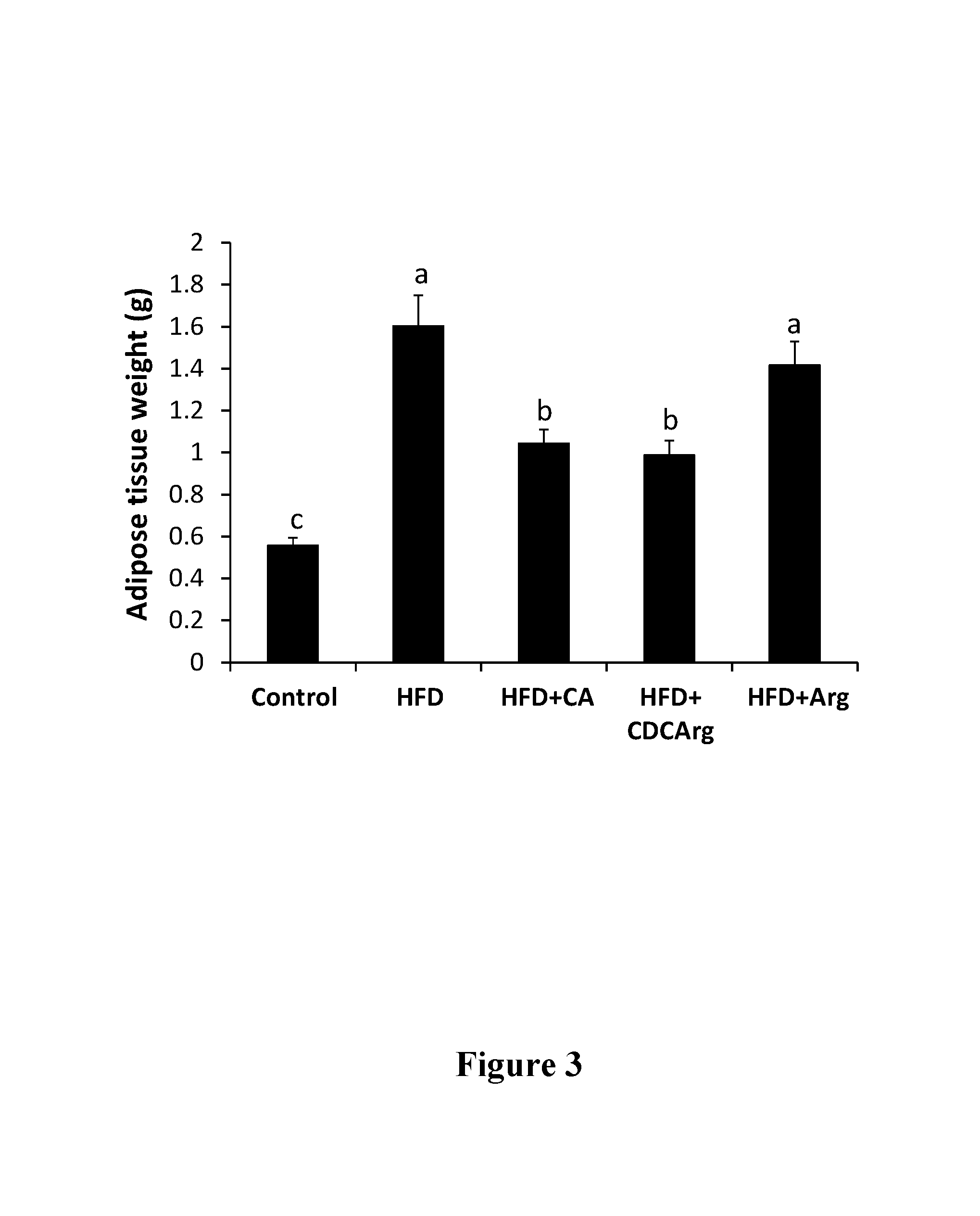Bile acid-basic amino acid conjugates and uses thereof
a technology of amino acid conjugates and bile acids, applied in the field of bile acid-basic amino acid conjugates, can solve the problems of increasing the risk of developing a more serious disease, and achieve the effects of reducing or even preventing the adverse physiological effects of this diet, reducing body weight gain, and increasing food consumption
- Summary
- Abstract
- Description
- Claims
- Application Information
AI Technical Summary
Benefits of technology
Problems solved by technology
Method used
Image
Examples
example 1
Synthesis of Chenodeoxycholyl-Arginine-Ethyl Ester (CDCArg)
[0232]
[0233]Synthetic Procedure:[0234]1. Chenodeoxycholic acid (78.5 gm, 0.2 mol) was dissolved in DMF (250 mL) and tributylamine (95.3 mL) in 1000 ml round bottom flask.[0235]2. Ethyl chloroformate (20.16 mL) was slowly added to the mixture at 0° C.[0236]3. The mixture was stirred at 0° C. for 30 min.[0237]4. In 500 ml round bottom flask, a mixture of arginine ethyl ester dihydrochloride (60.28 gm, 0.22 mol) and tributylamine (95.3 mL) in DMF (200 mL) was prepared.[0238]5. It was transferred to a dropping funnel and slowly added to the mixture of mixed anhydride prepared from chenodeoxycholic acid and ethyl chloroformate at 0° C. (step 1).[0239]6. The mixture was stirred at room temperature for overnight.[0240]7. The mixture was poured on ice and the gummy residue separated out was collected by separating from water (77 gm).[0241]8. The water from step 5 concentrated on rotary evaporator.[0242]9. The residue obtained after ...
example 2
Testing CDCArg in a High Fat Diet (HFD) Model in Mice
[0250]Experimental Design
[0251]HFD: 60% calories from fat (mainly palm stearin).
[0252]Control diet: low fat diet (LFD) 16% calories from fat (vegetable oil, regular animal diet).
[0253]C57BL mice mail, 8 mice per group.
[0254]Treatment Groups:
[0255]1) Animals supplemented with control LFD (“LFD” or “Control”).
[0256]2) Animals supplemented with HFD (“HFD”).
[0257]3) Animals supplemented with HFD and CDCArg in an amount that equals 0.5% of the food (“HFD+CDCArg”).
[0258]4) Animal supplemented with HFD and cholic acid in an amount that equals 0.5% of the food (“HFD+CA”).
[0259]5) Animal supplemented with HFD and 1.25% L-arginine in the drinking water (“HFD+Arg”).
[0260]The animals in the different groups were fed the different diets for five weeks, during which their food consumption and various physiological parameters were measured. Chemistry (cholesterol and triglycerides, electrolytes and creatinine) and enzymatic blood measurements we...
example 3
Effects of CDCArg Following the Onset of Liver Steatosis in Mice Fed a High Fat Diet (HFD)
[0289]Experimental Design
[0290]Mice were randomly divided into two dietary groups:
[0291]1) Control diet: low-fat diet (LFD), 16% calories from fat (n=5);
[0292]2) High-fat diet (HFD): 60% calories from fat (mainly palm stearin) (n=16).
[0293]In order to determine the effects of CDCArg following the onset of liver steatosis, mice were first treated for 10 weeks with HFD to develop hepatic fat accumulation. Thereafter, the HFD-fed mice were divided to two equal groups (n=8 in each group): (a) continued the previous HFD treatment, and (b) HFD+CDCArg 0.5% w / w. In this part of the experiment mice were pair-fed (15.5 kCal / day per mice). The LFD control group consumed on average the same amount of calories per day per mice. The duration of treatment with CDCArg was four (4) weeks. Food consumption and gain of weight were evaluated.
[0294]Results
[0295]Weight and Metabolism:
[0296]As expected, consumption o...
PUM
| Property | Measurement | Unit |
|---|---|---|
| structure | aaaaa | aaaaa |
| concentration | aaaaa | aaaaa |
| resistance | aaaaa | aaaaa |
Abstract
Description
Claims
Application Information
 Login to View More
Login to View More - R&D
- Intellectual Property
- Life Sciences
- Materials
- Tech Scout
- Unparalleled Data Quality
- Higher Quality Content
- 60% Fewer Hallucinations
Browse by: Latest US Patents, China's latest patents, Technical Efficacy Thesaurus, Application Domain, Technology Topic, Popular Technical Reports.
© 2025 PatSnap. All rights reserved.Legal|Privacy policy|Modern Slavery Act Transparency Statement|Sitemap|About US| Contact US: help@patsnap.com



